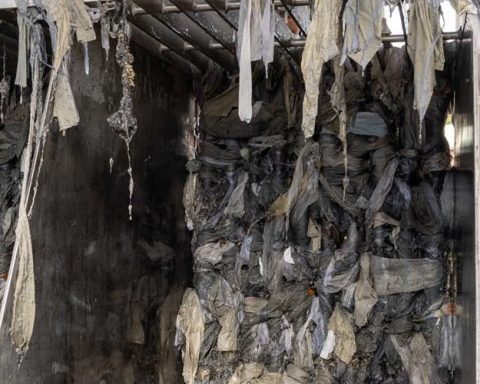Indoor fireplaces may release tiny particles that can cause health complications when inhaled, according to research from Stellenbosch University’s Faculty of Engineering. The study found that the the harmful substances emitted by indoor fireplaces exceeded the guidelines established by the World Health Organisation. Long-term exposure to these particles can lead to premature deaths and arrested lung function in children. The research suggests further study is needed, including interventionist experiments that provide indoor air quality monitoring data to households to encourage changes in behaviour and indoor environmental practices.
The Health Implications of Indoor Fireplaces
Indoor fireplaces can release minuscule solid or liquid particles into the air, which can cause health complications when inhaled. The volume of harmful substances emitted by indoor fireplaces exceeds the guidelines established by the World Health Organisation, and prolonged exposure to these particles has been linked to premature deaths and arrested lung function in children. The concentration of these tiny particles often exceeds the recommended limit, even after the embers have cooled.
As the harsh winter of Cape Town descends, the enticing prospect of a blazing fire in our homes offers much-needed solace. It’s an inviting warmth that serves as a sanctuary for those lucky enough to have an indoor fireplace. However, the seductive glow of this luxury comes with a cost, one that’s not just measured in firewood, matches, and upkeep. This cost, as revealed by recent research, could be affecting our health.
The Health Implications of Indoor Fireplaces
In an innovative study, a group of scientists from Stellenbosch University’s Faculty of Engineering have probed the repercussions of our beloved winter warmers. It seems that the comforting heat from our indoor fireplaces might be radiating a more malicious side, gravely impacting our health.
The research team, including Rita van der Walt, Rentia Jacobs, Sara Grobbelaar, and Thinus Booysen, concluded that indoor fireplaces can release minuscule solid or liquid particles into the air. When inhaled, these particles can cause health complications. Some of these particles may embed themselves in our lungs, while others may penetrate our bloodstream.
While research has highlighted the negative effects of poor indoor air quality in informal settlements, where indoor fires are a crucial source of heat, the influence on formal housing, where fireplaces are more of a luxury, is still largely uncharted territory.
The Consequences of Indoor Fireplaces
Rita van der Walt, a PhD candidate from the Department of Electrical and Electronic Engineering, shared that their study found that the volume of harmful substances emitted by indoor fireplaces exceeds the guidelines and standards established by the World Health Organisation (WHO).
Prolonged exposure to these minuscule particles, ranging from months to years, has been linked to premature deaths, especially among individuals with chronic heart or lung conditions. They are even attributed to the arrested development of lung function in children.
The research team analyzed air quality in homes that use both open and closed indoor fireplaces during winter. The data was collected by sensors placed near the fireplaces, which recorded the concentration of these tiny particles every 11 minutes, resulting in 130 measurements daily.
Disturbing Findings and Future Recommendations
The findings were shocking. The 24-hour average concentration often exceeded the WHO’s recommended limit of 15 micrograms per cubic metre. Strikingly, even after the embers had cooled, the particle levels in the air stayed above the limit for an extended period.
The concentrations were slightly higher for open fireplaces. On comparing the average levels of particles between open and closed fireplaces, van der Walt and her team found significantly higher and more fluctuating readings in homes with open fireplaces.
When these preliminary findings were shared with a household that used an open fireplace, they immediately stopped using indoor fires. This led to a significant drop in particle concentrations.
This study, while exploratory, has provided crucial insights, laying a path for a larger, more extensive study that could even include lower-income housing. The team also suggests future work that could involve interventionist experiments, providing indoor air quality monitoring data to households to encourage proactive changes in behavior and indoor environmental practices.
The pleasure of gathering around a warm fireplace on a cold winter night is indeed invaluable, but it appears that this privilege comes with an unexpected cost. The awareness of this potential health risk could educate households about the effects of indoor fireplaces on air quality and possibly guide us towards maintaining our home fires in a safer, healthier way.
What are the health implications of indoor fireplaces?
Indoor fireplaces can release tiny solid or liquid particles into the air, which can cause health complications when inhaled. Prolonged exposure to these particles has been linked to premature deaths and arrested lung function in children.
Do indoor fireplaces exceed the guidelines for harmful substances?
Yes, the volume of harmful substances emitted by indoor fireplaces exceeds the guidelines established by the World Health Organisation, according to research from Stellenbosch University’s Faculty of Engineering.
Are closed fireplaces less harmful than open ones?
On comparing the average levels of particles between open and closed fireplaces, the research team found significantly higher and more fluctuating readings in homes with open fireplaces.
Can particle levels remain high even after the fire has cooled?
Yes, even after the embers had cooled, the particle levels in the air stayed above the recommended limit for an extended period.
How can we reduce the health risk associated with indoor fireplaces?
Future work could involve interventionist experiments, providing indoor air quality monitoring data to households to encourage proactive changes in behavior and indoor environmental practices.
Is more research needed on this issue?
Yes, this study is exploratory and suggests the need for a larger, more extensive study that could even include lower-income housing. Additional research may help to address this potential health risk and guide safer, healthier practices for maintaining indoor fireplaces.










